ANIMALS
Meet the Magnificent Purple Sunbird with a Shimmering Coat of Metallic Blue and Purple
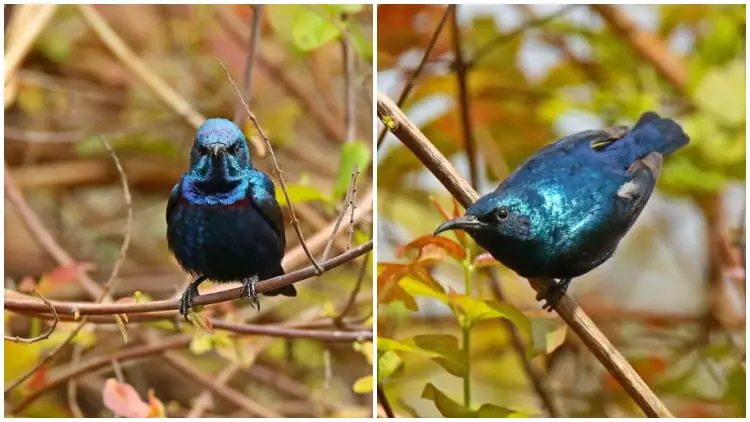
Birds continuously mesmerize us with their breathtaking beauty. In addition to the vibrant and colorful species, many individuals also hold a profound admiration for creatures that possess a sparkling allure. It’s no wonder that you’ll find it difficult to divert your gaze from the enchanting Purple Sunbird. This particular bird, scientifically known as Cinnyris asiaticus, showcases remarkable beauty with its captivating purple plumage.
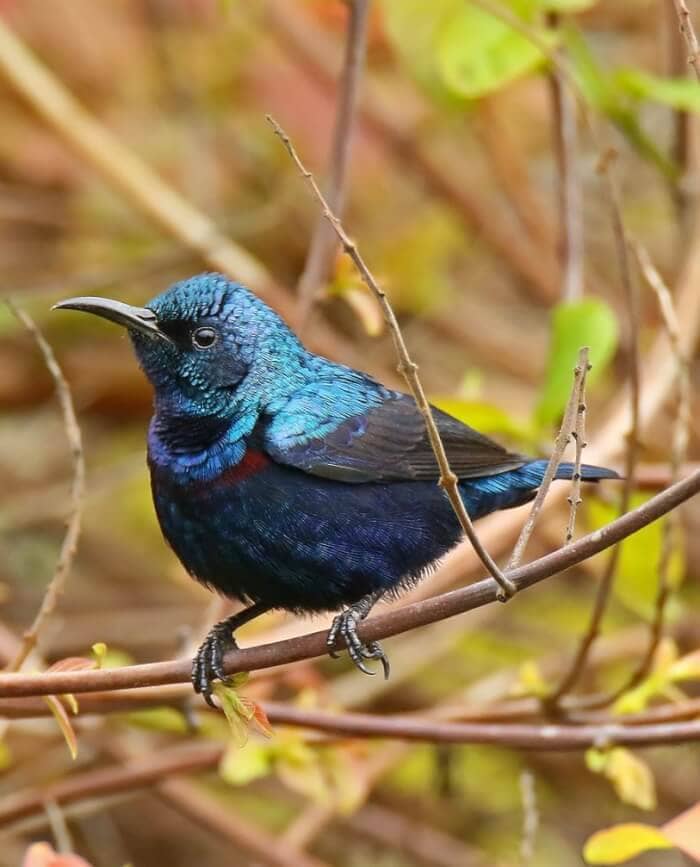 Image source: Imran Shah / CC BY-SA 2.0
Image source: Imran Shah / CC BY-SA 2.0
This species is scientifically referred to as the Cinnyris asiaticus bird. It measures a mere 10 centimeters in length and boasts a distinctive square-ended tail. The male members of this species stand out with their stunning metallic blue and purple feathers, which appear darker on the upper parts, accompanied by dark brown wings. Their purple underside resembles their relative, the Lotens Sunbird. During the mating season, the male birds proudly exhibit yellow pectoral tufts to attract potential partners.
 Image source: J.M.Garg / CC BY-SA 3.0
Image source: J.M.Garg / CC BY-SA 3.0
Similar to numerous other bird species, the female purple sunbird exhibits a more subdued appearance. Their feathers are primarily olive-brown, while their breast and belly take on a yellowish hue. They also feature pale supercilia above their eyes. Interestingly, male individuals share the same appearance as females until they reach maturity.
 Image source: Mike Prince / CC BY 2.0
Image source: Mike Prince / CC BY 2.0
This stunning species is indigenous to slender forests and garden areas across South and Southeast Asia. On occasion, they can also be spotted in the western regions of the Arabian peninsula.
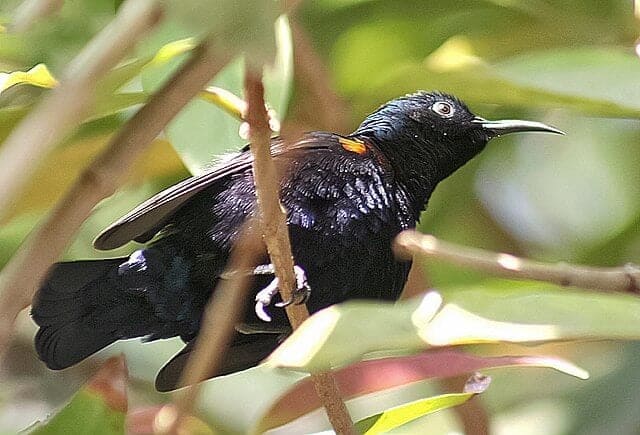 Image source: J.M.Garg / CC BY-SA 3.0
Image source: J.M.Garg / CC BY-SA 3.0
In general, purple sunbirds primarily feed on nectar, but they also occasionally consume insects and small berries.
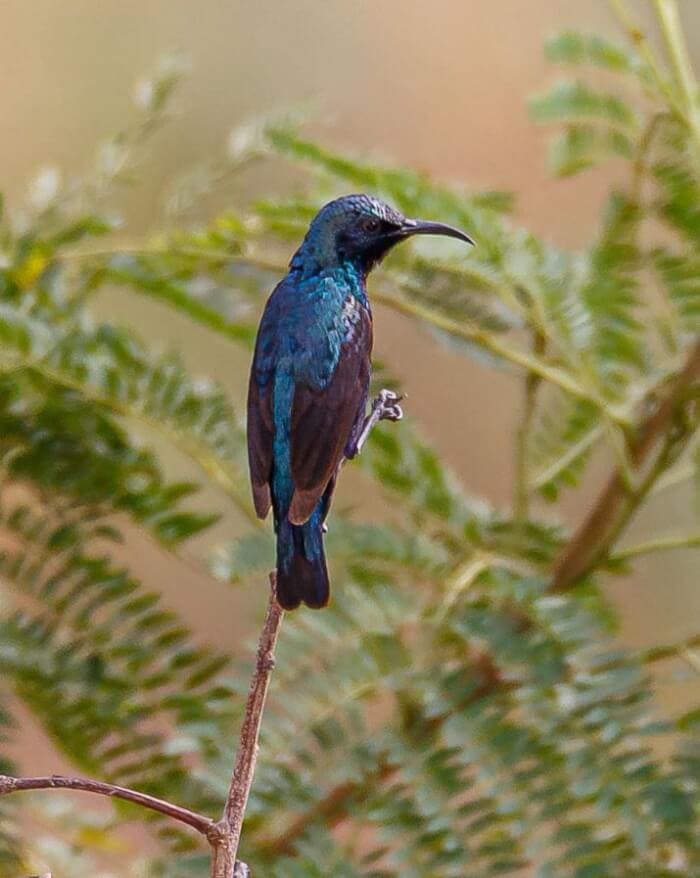 Image source: Hari K Patibanda / CC BY 2.0
Image source: Hari K Patibanda / CC BY 2.0
During the breeding season, the male purple sunbird puts on a captivating display by raising his head, fanning his tail, and revealing his pectoral tufts. This mesmerizing performance is accompanied by a melodious song, aiming to capture the attention of the females.
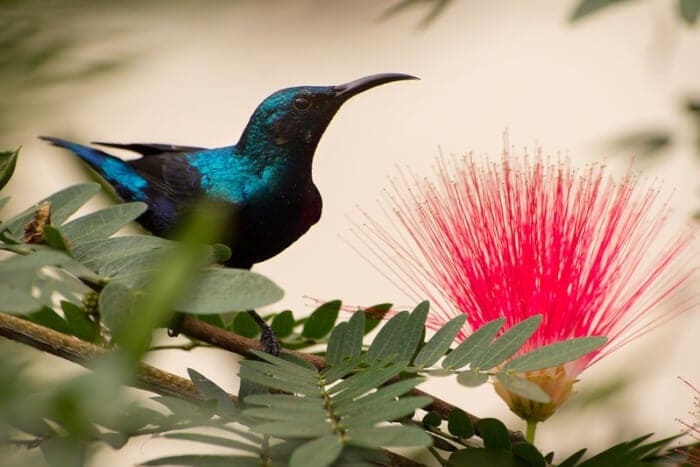 Image source: Vijay Sonar / CC BY 2.0
Image source: Vijay Sonar / CC BY 2.0
The female purple sunbird assumes the responsibility of gathering cobwebs, thin strips, and barks to construct the nest. The male also assists periodically throughout the building process. Typically, the female lays around 2 eggs, which hatch after an incubation period of 15 to 17 days. Both parents actively search for food to nourish their offspring.
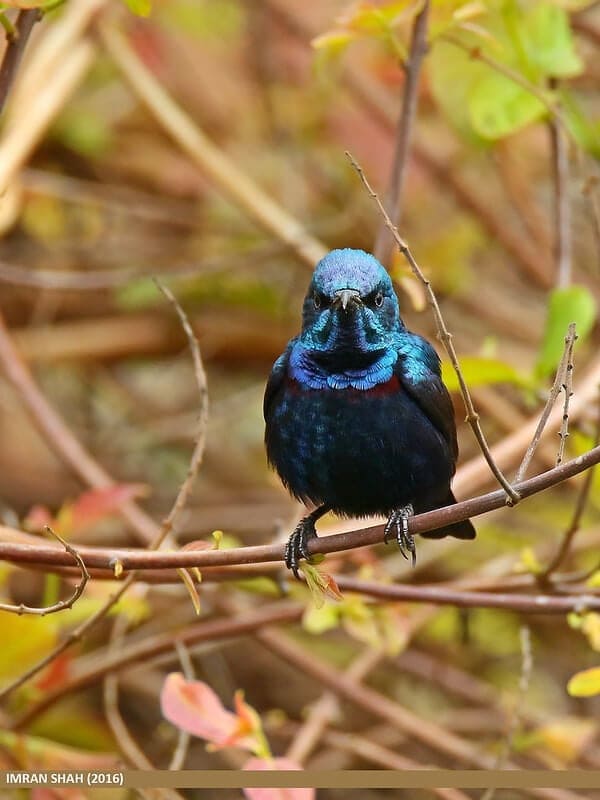 Image source: Imran Shah / CC BY-SA 2.0
Image source: Imran Shah / CC BY-SA 2.0
Surprisingly, sunbirds have the potential to live up to approximately 22 years when kept in captivity.
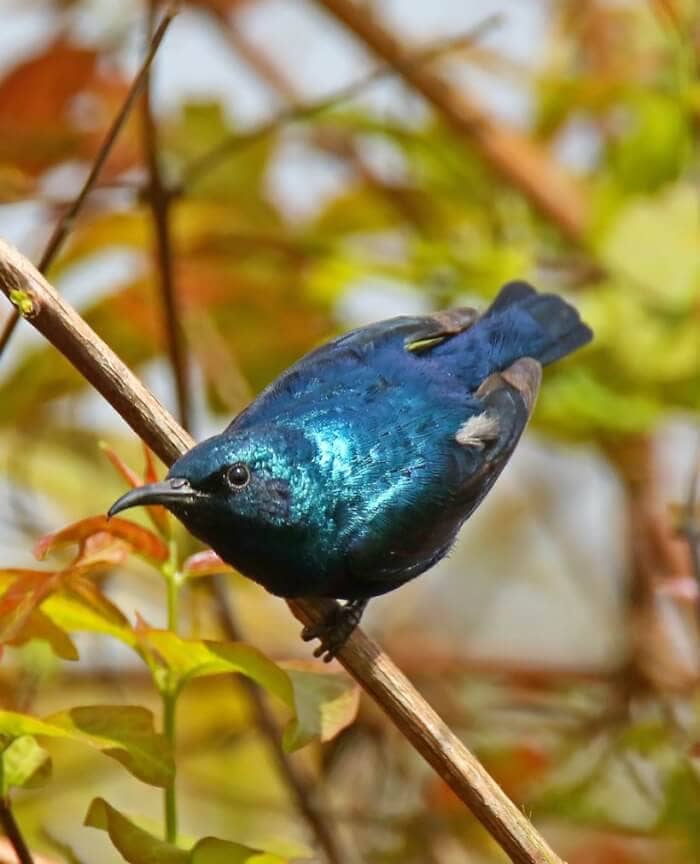 Image source: Imran Shah / CC BY-SA 2.0
Image source: Imran Shah / CC BY-SA 2.0
Luckily, the population of these birds hasn’t reached a worrisome decline, and therefore, they are classified as “Least Concern” on the Red List, indicating a relatively stable status.
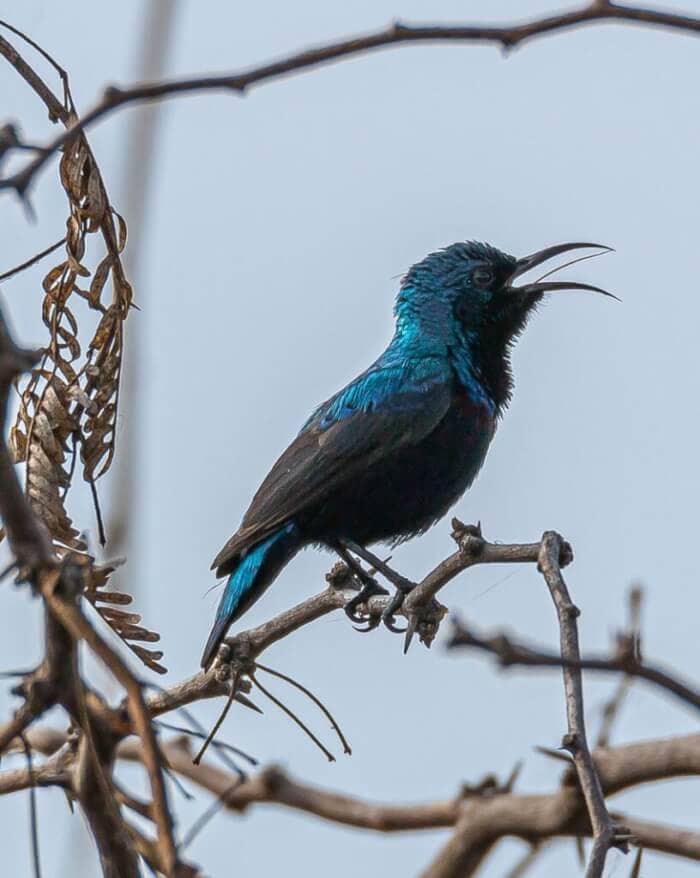 Image source: Hari K Patibanda / CC BY 2.0
Image source: Hari K Patibanda / CC BY 2.0
ANIMALS
Amazing Video of Unseen Ocean Creatures in the Ningaloo Canyons

The Schmidt Ocean Institute recently explored the Ningaloo Canyons on the western coast of Australia using a robotic underwater vehicle called the ROV Sebastian. Check out the amazing video of what they discovered in the deep parts of the Indian Ocean.
More info: Youtube




ANIMALS
These Pics Are Art and the Artists Are Insects

Flying insects move so quickly that they are hard to follow, but new technology and some smart ideas have helped Spanish photographer Xavi Bou do just that. After spending 10 years focusing on birds in flight for his Ornithographies project, he turned his attention to insects.
For Entomographies, he uses high-speed video footage taken by Adrian Smith, an insect expert at North Carolina State University, to study and record how insects move. Bou then picks multiple frames and combines them into single images that show the fast movements of one or more insects through space and time.
With Smith’s help, Bou has captured the aerial tricks of wasps, the jumps of leafhoppers, and the fluttering of butterflies in amazing detail. He hopes that by doing this, he can make people more aware of the decline in important insect populations around the world.
1. Zebra longwing
This butterfly, which is common in many areas of the Americas, really fits its name. It can fly very high with just a few flaps of its large wings.
 Image source: nationalgeographic
Image source: nationalgeographic
2. Two-lined spittlebug
This insect, which comes from the eastern United States, is often seen as a pest because it likes to eat grass. Its springy back legs can make it jump into the air like a rocket.
 Image source: nationalgeographic
Image source: nationalgeographic
3. Yellow-collared scape moth
Unlike most moths, this North American species flies during the day. Its shiny blue-black wings sparkle in the sunlight.
 Image source: nationalgeographic
Image source: nationalgeographic
4. Ailanthus webworm moths
These tropical moths have spread farther north in the U.S. Because of their larval host, the invasive tree of heaven, they are now one of the most common backyard moths in the country.
 Image source: nationalgeographic
Image source: nationalgeographic
5. Common stonefly
Mostly found in eastern North America, this insect starts its life as an underwater nymph in forested streams or rivers. Then it leaves the water, sheds its skin, and becomes an adult with wings.
 Image source: nationalgeographic
Image source: nationalgeographic
6. Green lacewings
Eighty-seven species of this insect have been found in the U.S. and Canada. Since they eat a lot of unwanted plant pests like aphids and mites, they are often used to naturally control these pests.
 Image source: nationalgeographic
Image source: nationalgeographic
7. Grapevine beetle
This insect, fittingly named, eats the leaves and fruit of grapevines, both wild and farmed, but it doesn’t do much damage to the plants. As a type of scarab beetle, it often flies in a curved path.
 Image source: nationalgeographic
Image source: nationalgeographic
8. Oak treehopper and green treehopper
Treehoppers are known for their uniquely shaped pronotum, the part behind their head, which often looks like plant parts to hide from predators. They can jump well thanks to special muscles.
 Image source: nationalgeographic
Image source: nationalgeographic
9. Banded orange
This brightly colored butterfly can be found from Mexico to Brazil. Before mating season, male butterflies look for mineral salts, sometimes even drinking salty fluids from the skin, eyes, and nostrils of other animals.
 Image source: nationalgeographic
Image source: nationalgeographic
10. Sapho longwing
Longwings can live for 6 to 7 months, longer than most butterflies. This type, found from Mexico to Ecuador, has shiny blue wings, which is why it’s also called the Sapphire longwing.
 Image source: nationalgeographic
Image source: nationalgeographic
ANIMALS
Eagle and Fox in an Epic Midair Battle Over a Rabbit, Were Captured by a Photographer

Wildlife photography often depends on the perfect combination of good timing and the right place.
That’s exactly what happened when Kevin Ebi, an experienced wildlife photographer, captured an incredible battle between a bald eagle and a red fox, both competing for a rabbit meal.
In a detailed blog post, Ebi shares the fascinating series of events that unfolded while he was photographing foxes in San Juan Island National Historical Park, located in Washington state.
Ebi noticed a lively group of eight fox kits as they began their hunting lessons. Suddenly, they spotted a rabbit, and a thrilling chase ensued. Eventually, one of the foxes emerged as the winner, proudly carrying the rabbit across the field.
 Image source: Kevin Ebi
Image source: Kevin Ebi
Ebi shares what happened at that moment: “As I followed the fox with my camera, a sudden bald eagle cry caught my attention. It was swiftly approaching, clearly aiming for the rabbit. I quickly focused on the fox, anticipating a quick turnover of events.”
To Ebi’s astonishment, instead of a quick surrender, the situation turned into a intense fight in the air.
The eagle used its power to lift the fox and rabbit high up in the sky. Even while airborne, the fox attempted to break free by swinging back and forth.
 Image source: Kevin Ebi
Image source: Kevin Ebi
 Image source: Kevin Ebi
Image source: Kevin Ebi
 Image source: Kevin Ebi
Image source: Kevin Ebi
In the end, the eagle moved the rabbit to its other claw, causing the fox to let go. The intense battle came to an end in less than 10 seconds.
 Image source: Kevin Ebi
Image source: Kevin Ebi
For those worried about the fox’s well-being after the fight, Ebi reassures that it was not injured. The fox swiftly bounced back from the encounter and resumed its playful behavior with the other young foxes, showing no visible wounds from the aerial clash.
 Image source: Kevin Ebi
Image source: Kevin Ebi
 Image source: Kevin Ebi
Image source: Kevin Ebi
 Image source: Kevin Ebi
Image source: Kevin Ebi
 Image source: Kevin Ebi
Image source: Kevin Ebi
-

 GARDEN10 tháng ago
GARDEN10 tháng ago15 Houseplants That Grow Well in Vases with Water
-

 FUNNY1 năm ago
FUNNY1 năm ago20 Funny Grammar Fails That Will Make You Laugh All Day
-

 GARDEN1 năm ago
GARDEN1 năm ago4 Easiest Ways to Get Free Plants
-

 GARDEN11 tháng ago
GARDEN11 tháng ago30 Shimmering Side Yard Landscape Ideas
-

 FUNNY1 năm ago
FUNNY1 năm ago30 Funny and Perplexing Photos That Make You Laugh All Day
-

 FUNNY1 năm ago
FUNNY1 năm ago30 Weirdest Things That People Came Across On The Subway
-

 ANIMALS1 năm ago
ANIMALS1 năm agoBritish Angler Caught Huge 67-Pound Goldfish in the World
-

 ANIMALS1 năm ago
ANIMALS1 năm agoMore Than 3 Million People Baffled by Video of Strange Figure on the Beach




